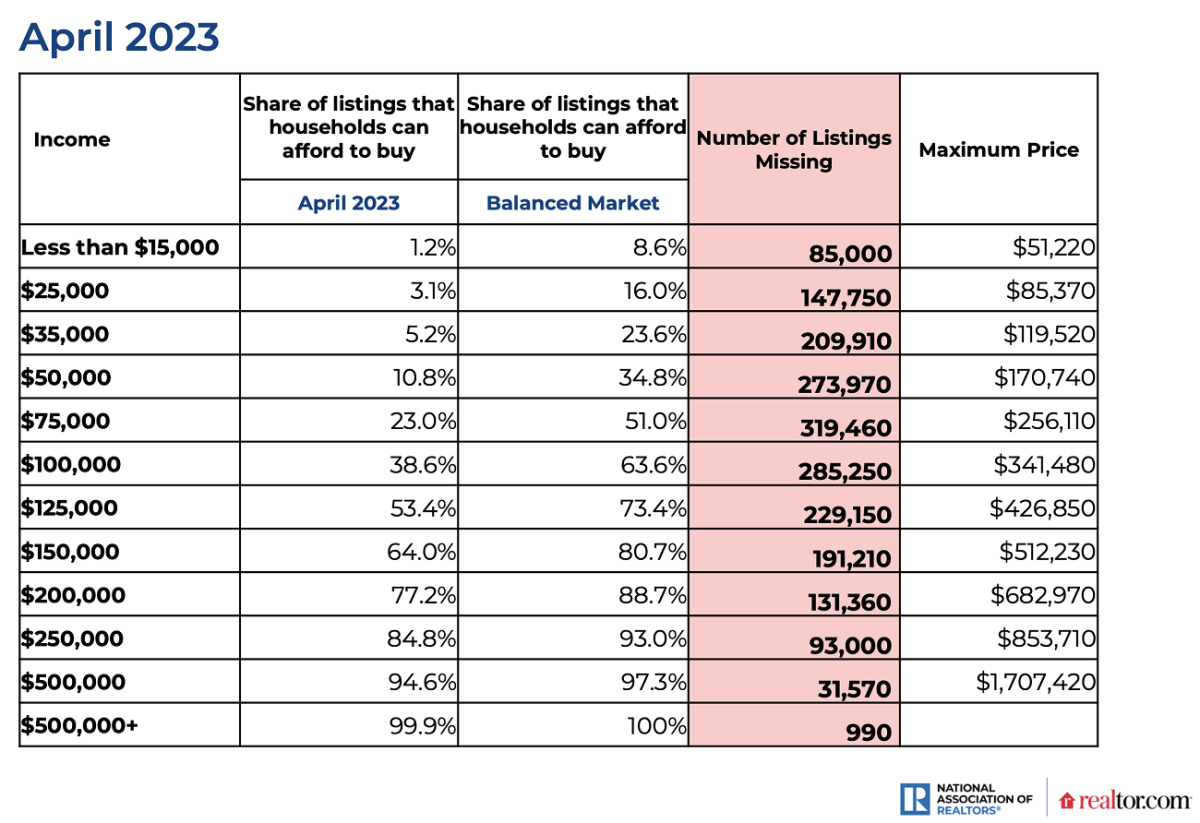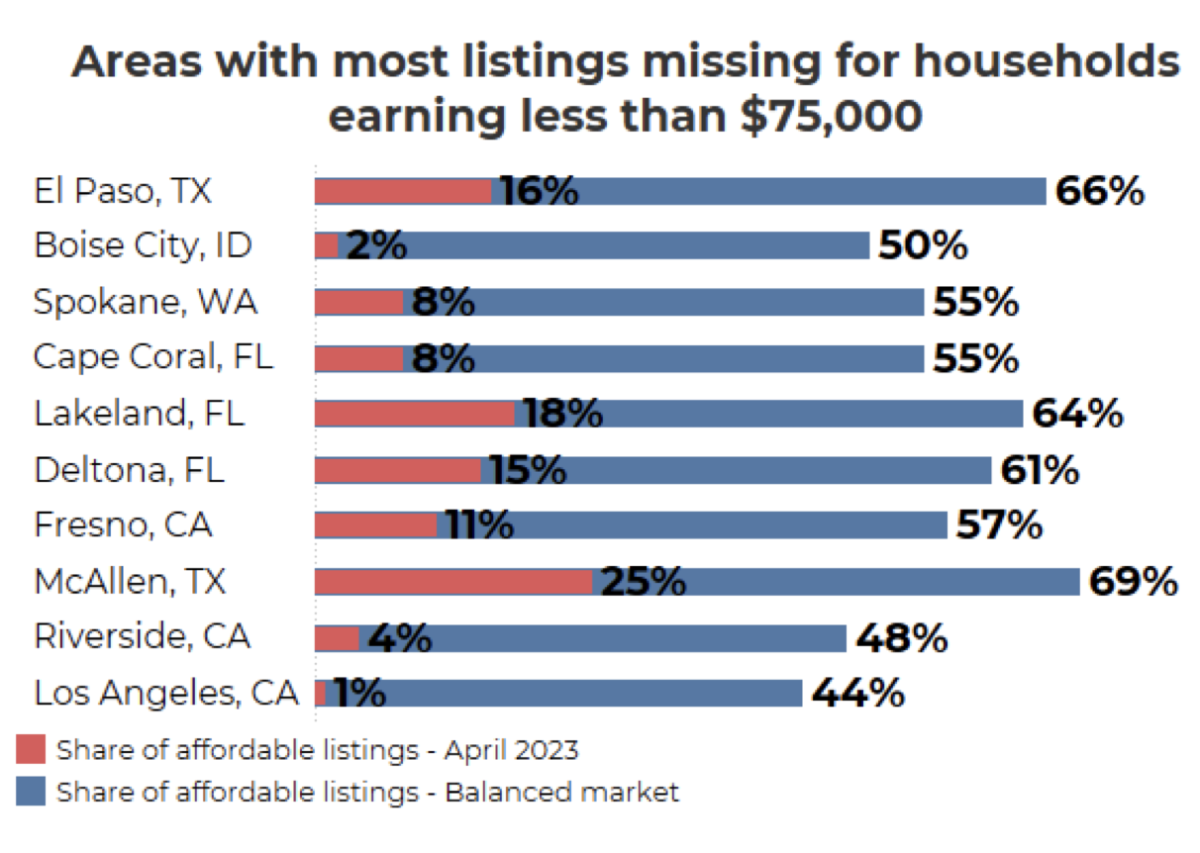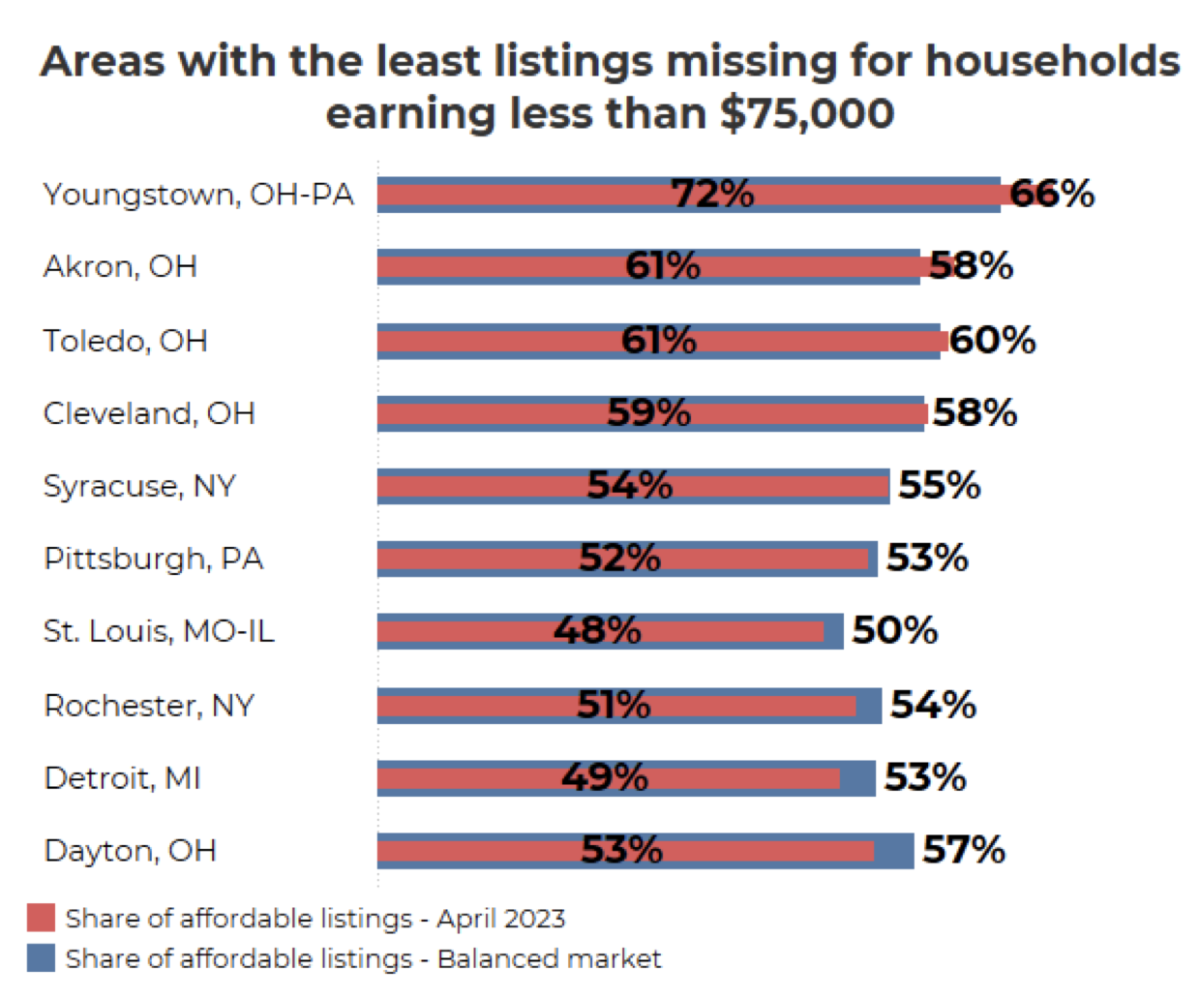The housing market is short more than 300,000 homes in price points middle-income buyers can afford, shows research from NAR and realtor.com®.
The national housing shortage is most acute in price points that middle-income buyers can afford, according to new National Association of REALTORS® data. The market is short about 320,000 listings worth up to $256,000—which is considered the affordability range for households earning up to $75,000 annually—according to the Housing Affordability & Supply Report, a joint research project between NAR and realtor.com®.
Due to the pronounced inventory squeeze in these price points, middle-income buyers may find the steepest competition when shopping for homes. And as a result, these buyers may find it even harder to build wealth through homeownership, says Nadia Evangelou, senior economist and director of real estate research at NAR.
Low inventory and low affordability constituted “double trouble” for the market last year, NAR and realtor.com® reported at the time. These challenges haven’t abated and are particularly severe for some racial and ethnic groups. Now middle-income buyers overall can afford to purchase less than a quarter—or 23%—of listings nationwide, the Housing Affordability & Supply Report shows. Five years ago, middle-income buyers could afford half of all homes on the market.
Even though homebuying activity has stalled this spring, inventory has risen from last year’s record low—up more than 5 percentage points, according to NAR. But it’s still not enough, particularly for middle-income buyers, the report warns. “Ongoing high housing costs and the scarcity of available homes continues to present budget challenges for many prospective buyers, and it’s likely keeping some buyers in the rental market or on the sidelines and delaying their purchase until conditions improve,” says realtor.com® Chief Economist Danielle Hale. “Those who are able to overcome affordability constraints may be increasingly drawn to newly constructed homes or the suburbs and beyond, both of which may offer buyers more realistic opportunities for homeownership.”

Where Middle-Income Buyers May Struggle the Most
Of the 100 largest metro areas examined in the report, these are the markets with the fewest affordable homes for middle-income buyers.

The report also uncovered disparities in housing affordability among racial and ethnic groups. For example, nearly 66% of Black Americans earn $75,000 or less and can afford to buy only 22% of listings nationwide, the report found.
Inventory Options Abound in Some Areas
Some markets may offer better prospects for middle-income buyers than others. For example, three Ohio metros—Youngstown, Akron and Toledo—had the most affordable homes for this income group of the 100 metros tracked in the study.

To improve these dynamics in more markets, economists say more housing inventory and greater affordability is needed. “A two-fold approach is needed to help with both low affordability and limited housing supply,” Evangelou says. “It’s not just about increasing supply. We must boost the number of homes at the price range that most people can afford to buy.”
Source: nar.realtor












